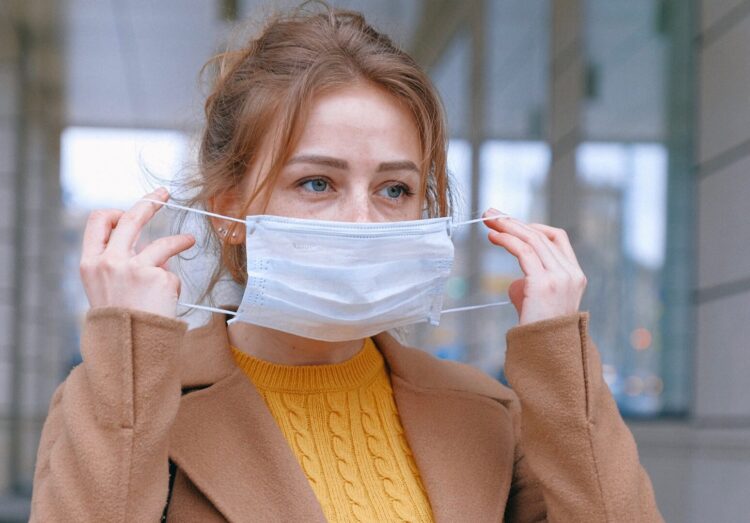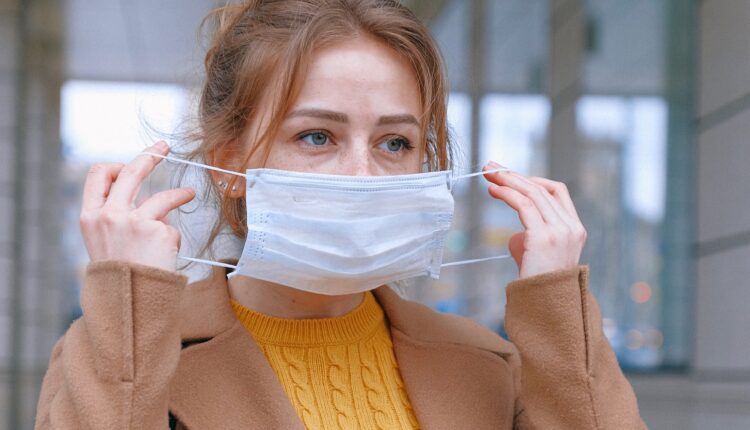A sharp rise in COVID-19 cases and new restrictions has fuelled the debate on face coverings and evidence is growing that they do help to cut virus transmission. Tony McDonough reports

Few topics have provoked more debate during the COVID-19 crisis than the wearing of face masks.
People opposed to wearing them claim they do little to limit the spread of infections. Some disparagingly refer to them as ‘muzzles’. For others it is matter of personal freedom and there have been public demonstrations against them this summer.
In the UK it is now compulsory to wear masks or face coverings in indoor public settings such as shops, public transport, galleries and museums. In recent days this rule has been extended to bars and restaurants. They can only be taken off when you are eating or drinking.
It is fair to say the efficacy of face coverings as a method of reducing COVID-19 transmission has not been proved definitively. The complex nature of transmission during epidemics makes pinpointing the effectiveness of a single measure difficult.
However, that is not to say there isn’t a significant and growing body of research supporting their use. One of the earlier criticisms of masks was that the virus is too small to be stopped by them. But this is countered by the act the virus is often carried by much bigger droplets against which coverings are believed to be effective.
With COVID cases on the rise across the Liverpool city region the issue of face coverings is now being discussed more. Matt Ashton, Liverpool’s director of public health, is a strong advocate of face coverings. He said: “Please follow the rules. Keep your distance, wear face coverings when needed.”
Clinical study
In the summer, a clinical study from Germany suggested a widespread wearing of face covering could cut transmission by up to 40%. Researchers from universities in Germany and Denmark looked studied infection rates in German regions.
They focused on the town of Jena, where people have been obligated to wear face coverings in public. In conclusion, the researchers said: “Based on our findings, we calculate a rule-of-thumb measure for the relative decrease in the daily growth rate of COVID-19 cases of about 40%.
“Consider a region in which the number of COVID-19 cases increased by 10% from one day to another. This increase would have been only 6% if there had been an obligation to wear face masks. With a 10% daily increase in COVID-19, cases double within seven days; in contrast, a 6% daily increase means cases double only within 12 days.”
Prof Trisha Greenhalgh, from the University of Oxford, has also voiced her support for face coverings in a number of research journals. She said: “Mathematical modelling suggests that a face covering that is 60% effective at blocking viral transmissions, and is worn by 60% of the population, will reduce R0 (reproduction number) below 1.”
Clear evidence
And the latest research, also from the University of Oxford, also offers what it calls “clear evidence” that wearing coverings does help to reduce virus transmission. They can offer protection for both the wearers and those around them.
Professor Melinda Mills, director of the Leverhulme Centre and author of the study, said: “The evidence is clear that people should wear masks to reduce virus transmission and protect themselves, with most countries recommending the public to wear them.
“Yet clear policy recommendations that the public should broadly wear them has been unclear and inconsistent in some countries such as England.”

Her team investigated the effectiveness of different face mask types and coverings, including an international comparison of policies and behavioural factors underlying usage. team They found that, after the WHO announced the pandemic in mid-March, some 70 countries immediately recommended mask wearing. But more than 120 now require mask wearing – most, everywhere in public.
Asian countries that had previous experiences of the SARS outbreak experienced early and virtually universal mask usage. But, says Professor Mills, many other countries have seen a reversal of behaviour.
Professor Mills added: “There has been a blind spot in thinking about the behavioural factors of how the general public responds to wearing masks. Also, by looking at lessons learned about face mask wearing from previous epidemics and other countries, we get a broader and clearer picture.”
The study found:
- Cloth face coverings are effective in protecting the wearer and those around them.
- Behavioural factors are involved, including how people understand the virus and their perceptions of risk, trust in experts and government, can adversely affect mask wearing.
- Face masks need to be seen as part of ‘policy packages’ with other measures such as social distancing and hand hygiene.
- Clear and consistent policies and public messaging are key to the adoption of wearing face masks and coverings by the general public.
Professor Mills says, ‘The public is confused about wearing face masks and coverings because they have heard the scientific evidence is inconclusive and advice from the WHO and others has changed.”
Around the world, the study found: “Next to hand washing and social distancing, face masks and coverings are one of the most of widely adopted non-pharmaceutical interventions for reducing the transmission of respiratory infections.”
Cotton masks
But, the study shows, some coverings are not as effective as others. Loosely woven fabrics, such as scarves have been shown to be the least effective. Professor Mills said, “Attention must also be placed on how well it fits on the face; it should loop around the ears or around the back of the neck for better coverage.”

She said the general public does not need to wear surgical masks or respirators. We find that masks made from high quality material such as high-grade cotton, multiple layers and particularly hybrid constructions are effective.
Crucially, the report also finds that wearing a cotton mask protects the mask wearer as well. But the report finds that face covering policy has been impacted by a lack of clear recommendations, likely because of an ‘over-reliance on an evidence-based approach and assertion that evidence was weak due to few conclusive randomised control trials (RCTs).
But she, explained: “RCTs don’t fit well when looking at behaviour and it was clear that high quality observational and behavioural research had been largely discarded. It is hard to understand why the policy resistance has been so high.
“There have been no clinical trials of coughing into your elbow, social distancing and quarantine, yet these measures are seen as effective and have been widely adopted.”

